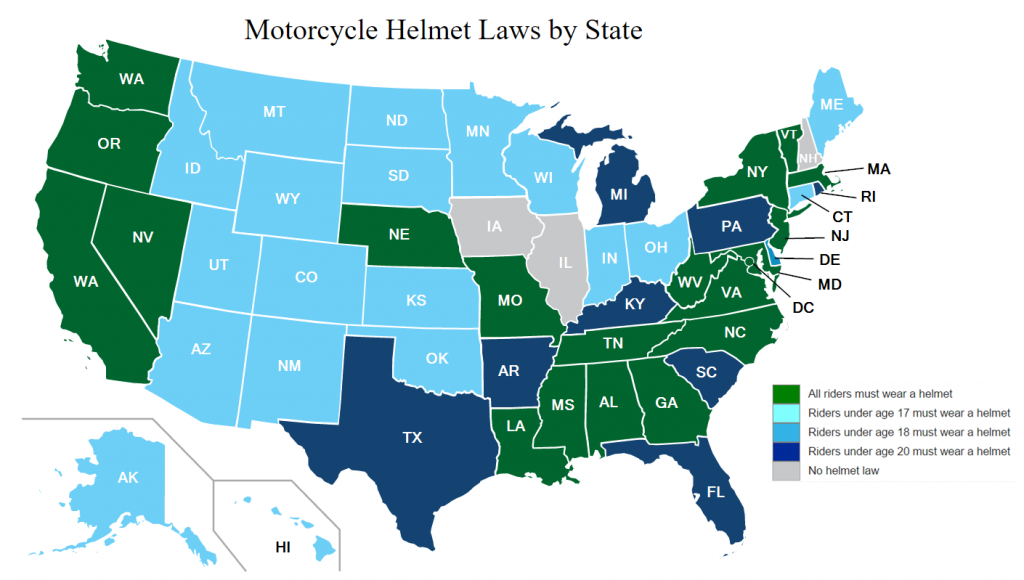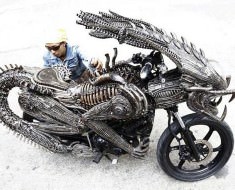Motorcycle helmet laws have changed a lot in the past half century and they now vary widely among the states. At this moment, 19 states and the District of Columbia have laws requiring ALL motorcyclists to wear a helmet. These are called universal helmet laws. Laws that require only SOME motorcyclists to wear a helmet are in place in 28 states. Three states have no motorcycle helmet use law: Illinois, Iowa and New Hampshire.
Many more states had universal helmet laws in the past. In the early 1970’s, almost all the states had these laws. However, in 1976, states successfully lobbied Congress to stop the Department of Transportation from assessing penalties on states without helmet laws.
Low-power cycle is a generic term used by IIHS to cover motor-driven cycles, mopeds, scooters, and various other 2-wheeled cycles excluded from the motorcycle definition. While state laws vary, a cycle with an engine displacement of 50 cubic centimeters or less, brake horsepower of 2 or less, and top speeds of 30 mph or less typically is considered an low-power cycle. Twenty-three states have motorcycle helmet laws that cover all low-power cycles. Twenty-four states and the District of Columbia have laws that cover some low-power cycles. (Via: IIHS HLDI)
As stated in a recent article, the lack of helmet laws in 31 states is behind the rise in motorcycle deaths, according to a new government report.
Here’s a map for you to see which helmet laws take place across the United States, state by state.
(Source: IIHS HLDI)








